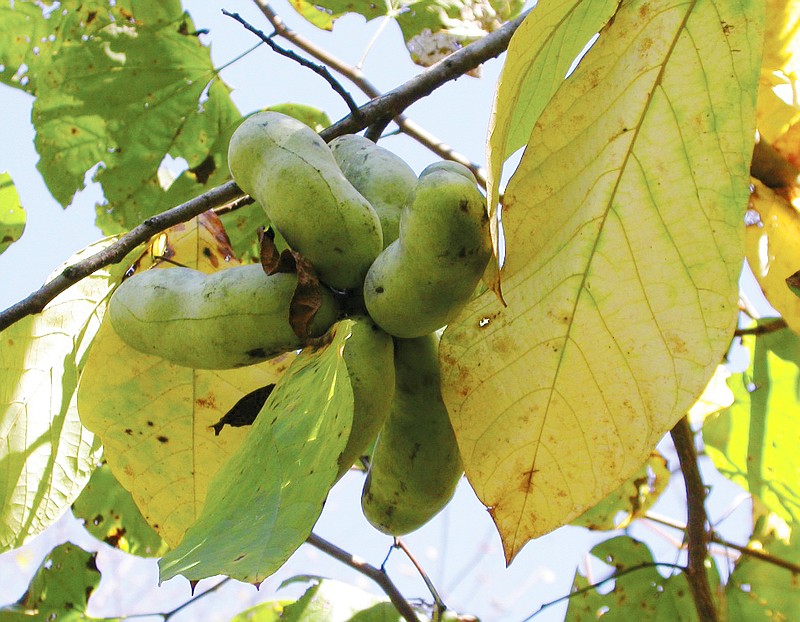It's the right time of year to enjoy a pawpaw - if you can find one.
The pawpaw fruit, also known as the Missouri banana or the hillbilly mango, ripens across the eastern United States in late August and September, but rarely if ever graces grocery store shelves.
On Thursday morning, Missouri Department of Conservation naturalist Alex Holmes led a virtual presentation all about picking the fruit of Missouri's official state fruit tree.
"You're probably wondering, how is he up there talking about how delicious these are? Why can't I buy one in a grocery store?" Holmes said. "The reason is, once these are picked and even in the refrigerator, you are racing a clock that is maybe three days long - they will turn into gooey messes that aren't worth eating just in a couple of days."
The pawpaw is a member of the annonaceae family, similar to custard-apples, sweetsops and soursops. The fruit has a sweet flavor that has been compared to banana or mango.
"This is a tree that grows really well in moist areas, and it grows really well in shaded areas," Holmes said. "So if you have a ravine or a creek bank, that's typically where we see them grow in the wild."
Pawpaw seedlings are also available for sale by the Missouri Department of Conservation and can be grown from seed. To make sure trees bear fruit, gardeners must plant two unrelated trees so they can cross-pollinate.
"The flowers of the pawpaw are fascinating," Holmes said, describing deep reddish blooms similar in color to meat. "They attract the underworld."
Pawpaw trees are pollinated by flies and other species attracted to the smell of death.
"Now I've stuck my nose in a lot of them trying to catch that odor and they don't to my nose smell that bad," Holmes said.
The leaves smell of bell peppers. The plant also attracts zebra swallowtail butterflies.
The fruit was once an important food source for Native Americans and was a favorite of George Washington. Raccoon and black bears still enjoy them.
A ripe pawpaw will be soft, ranging in size from that of a lemon to that of a mango. The pulp is custard-like. The further south the plant grows, the sweeter and more yellow the pulp will be.
"One thing that I like to do is walk through the woods like a gorilla and shake the trees," Holmes said. "When they break off of the branches and fall to the ground, you know they're ripe."
You can also tell if a pawpaw is ripe by its smell.
"When they are unripe, there's sort of a dirty-dishwater sort of smell to them," Holmes said. "You'll know right away that it's not ready to go when you open it up and smell it."
A pawpaw picked too early can be placed in a paper bag to ripen.
"It's really important that when we're harvesting anything from the wild we're keeping a couple of ethics in mind," Holmes said.
Pawpaws grow in many conservation areas, but sometimes there are regulations related to human activities that include fruit-picking.
"Take only what you can use," Holmes said. "You don't want to steal food from the bears and the raccoons - they all rely on this, too. We can go to the grocery story and buy mangoes, they can't."
Pawpaws are good fresh or chilled and can also be used in baked goods, such as breads or cookies, as well as in ice cream. Holmes told viewers of a time he even enjoyed a pawpaw pizza, where the pawpaw served as sauce and goat cheese and arugula served as toppings.
"We can use them in lots of recipes and in general I think you can pretty reliably substitute them for banana in most recipes," Holmes said.

